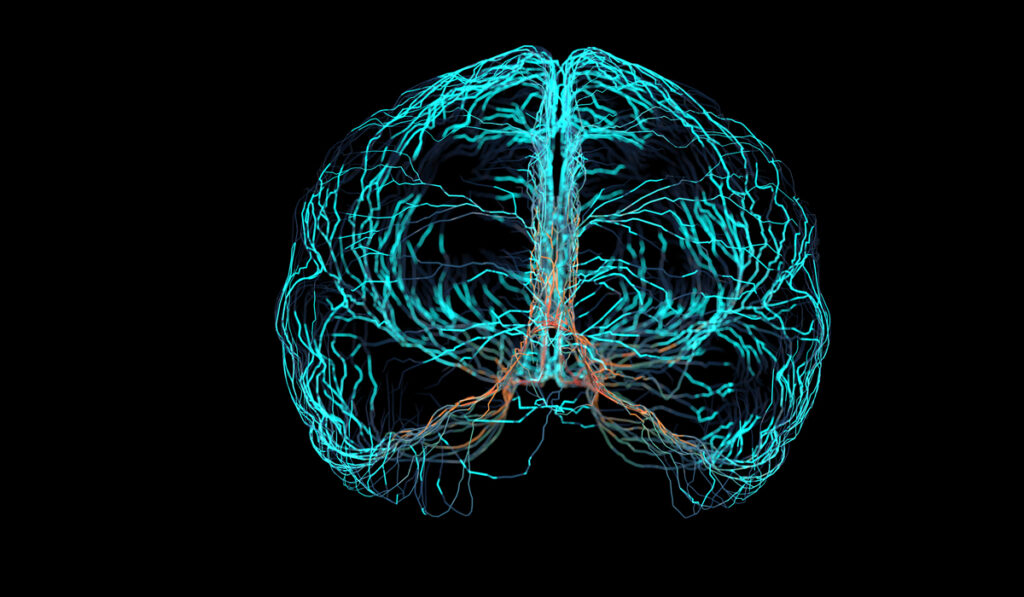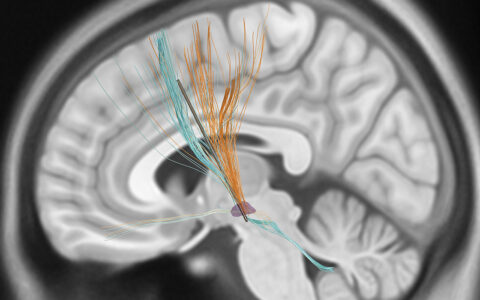In temporal lobe epilepsy (TLE), the most common form of epilepsy, up to 40 percent of patients fail to achieve seizure control with antiepileptic medications alone, yet many never receive the gold-standard treatment for medication-refractory seizures: anterior temporal lobectomy.
Despite the known benefits of the procedure – with half to two-thirds of patients free of disabling seizures one year after surgery – surgical treatment for epilepsy remains an underutilized option.
Sarah Bick, M.D., a functional neurosurgeon and an assistant professor in the Department of Neurosurgery at Vanderbilt University Medical Center, is examining the complex elements that lead to successful treatment. She and her co-authors on a new multicenter study, published in World Neurosurgery in May, examined pre-seizure auras by type to see if they are predictive of outcomes. The results add a valuable component to an epilepsy team’s decision matrix as they consider surgery.
When the researchers compared patients with and without auras, they found no significant differences in surgical outcomes. However, when they examined type of aura among the majority who had pre-seizure auras, they found mild to strong associations with outcomes. The study authors suggest that aura type is therefore a useful metric to consider in optimizing a patient workup and candidate selection for anterior temporal lobectomy (ATL).
“Studies like this may encourage greater use of the procedure in appropriate patients by refining the populations most likely to benefit,” she said.
Auras, Defined
An aura is a subjective sensation or emotion – like colors, smells, sounds, nausea, or sadness – near the onset of a seizure. They are categorized as epigastric, somatosensory, affective, mnemonic (e.g., déjà vu), auditory, visual, gustatory, cephalic (sensations within the head), or tonic-clonic (generalized shaking). Patients frequently experience more than one type. Such auras are experienced by 60 to 80 percent of patients with TLE who proceed with the lobectomy.
The individual aura types may provide clues to the site of the seizure’s origin in the brain. For example, an olfactory aura indicates that the seizure may be originating in the piriformis and hippocampus, while a gustatory aura may implicate the insular lobe and the frontal operculum. Yet seizures also travel along an extensive network, a fact that can confound these clues.
Type Matters
To test associations between outcomes and pre-operative auras, the researchers examined data on 174 patients who underwent an ATL: 147 with auras and 27 without. Sixty-five of these patients reported multiple types of auras.
“Studies like this may encourage greater use of the procedure in appropriate patients by refining the populations most likely to benefit.”
Mnemonic and epigastric auras were most highly correlated with seizure-free outcomes of surgery, with somatosensory, affective gustatory and “no aura” not far behind. In contrast, cephalic, gustatory, visual, and tonic-clonic auras were associated with worse Engel scores following ATL than the other types of auras.
“Since anterior temporal lobectomy only treats seizures originating in the temporal lobe, this suggests that these auras may be associated with seizure onset zones outside of the temporal lobe, even though preoperative testing in these patients had localized seizures to temporal structures,” Bick said.
Secondary Findings
Each of the 10 aura categories, including “no aura,” were also analyzed for associations with pathologic findings in mesial temporal structures. Associations between pathology in the lateral temporal lobe and the amygdala ranged from as low as a 14 percent of patients with auditory auras to as high as 63 percent of patients with gustatory auras. For the hippocampus, that range was as low as 42 percent for auditory and as high as 97 percent for affective auras. For lateral temporal lobe pathology, the associations ranged from 59 percent for cephalic to 100 percent for auditory.
The presence of multiple auras and fewer preoperative antiepileptic drugs were associated with better Engel scores. Other variables like mesial temporal sclerosis (scarring indicating seizure loci) on MRI were not significantly associated with outcome.
Informing Surgical Decisions
Bick said that since ATL only effects seizures originating from temporal lobe structures, the surgical decision depends largely on whether the information gathered on the patient predicts seizure origin.
“There are a number of tests we currently use to try to find out if this is the case, including MRI, EEG, PET, and seizure semiology [symptoms during the seizure],” Bick said. “But this is rarely clear-cut. Our study suggests that by helping confirm or raise questions about the site of the seizure’s origin, aura type is another important piece of information that can be added to the equation.”





